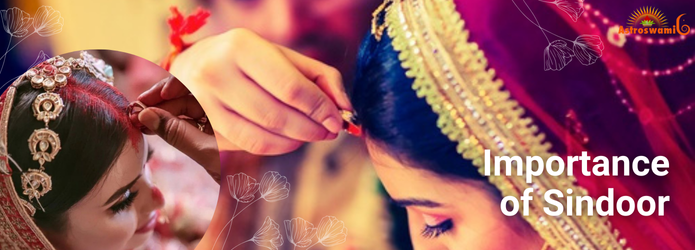
Sindoor holds a special place in Indian culture and tradition, symbolizing marital bliss and auspiciousness for married women. Its use and cultural significance have been prevalent for thousands of years. Let's delve into the history, importance, and cultural relevance of indoor.
The history of sindoor dates back to ancient times. References to sindoor can be found in the Vedas and Puranas. The use of sindoor was also observed in the Indus Valley Civilization, where figurines of women with sindoor marks on their foreheads were discovered. This indicates that the application of sindoor has been a long-standing tradition in India.
Sindoor holds immense significance in Indian society. It is not just a cosmetic adornment but also has religious and spiritual importance. For married women, sindoor is a symbol of their marital status. Applying sindoor in the parting of their hair signifies that they are married and pray for their husband's long life and prosperity. The red color of sindoor symbolizes strength and fertility, reflecting the energy and vibrancy of women.
The cultural significance of sindoor is profound. In Hinduism, the ritual of applying sindoor by the husband on his wife's forehead during the wedding ceremony is crucial. This act formally declares them as husband and wife. This ritual is prevalent in various forms across different parts of India but carries the same fundamental meaning.
Married women apply sindoor daily as a mark of their devotion and respect towards their husbands. Additionally, sindoor is prominently used during festivals and special occasions.
The use of sindoor is not only driven by religious and cultural reasons but also has a scientific perspective. Traditional sindoor contains natural ingredients like turmeric and mercury, which are considered beneficial for health. Turmeric is a natural antiseptic, while mercury helps regulate blood pressure. However, modern sindoor may contain chemical components, so it's essential to choose carefully.
Sindoor is an integral part of Indian society and culture. Its history, significance, and cultural importance have been passed down through generations, making it a cherished tradition. The use of sindoor symbolizes not just a tradition but also the blessings, love, and strength in a married woman's life.

Sawan or Shravan month has its own religious significance in Hindu mythology. This month of Shravan is the auspicious time that is celebrated in the w...

Shattila Ekadashi 2025: It is a substantial question when you will break your fast? The ritual which includes breaking the fast is called Parana....

The mind is represented by moon, its placement, condition and afflictions in the birth chart. ...

Tirupati Balaji Temple is one of the richest temples located in Andhra Pradesh....

Best Marriage Muhurats in July, August, September, October and November 2025 are 2nd, 3rd, 6th, 8th, 12th, 13th, 16th, 21st, 22nd, 23rd, 25th and 3...

This guide will help you understand what online kundli checking is, how it works, and why it’s a powerful tool for self-discovery and future planning....

Life is full of questions—some easy, some confusing, and some deeply personal. Whether you're unsure about your career, love life, or health, astrolog...